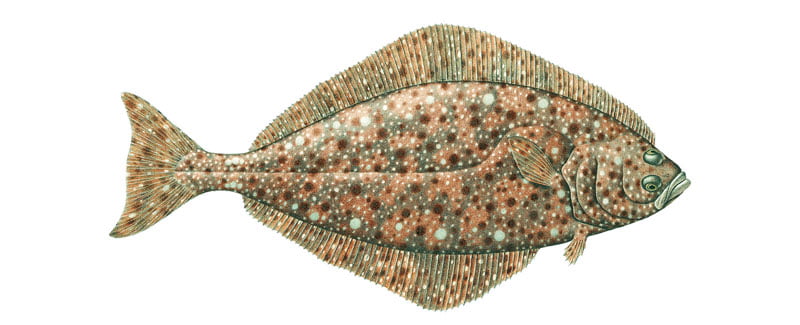Pacific Halibut are related to Atlantic halibut, and some scientists consider them to be the same species. They are the largest of all flatfishes and are among the largest fish in the sea, growing up to 2.7 m (9 ft) in length. The heaviest reported halibut was 318 kg (700lbs), and several have been documented in the range of 227 kg (500lbs). Female halibut are bigger than the males. Besides being bigger, female halibut generally grow faster and live longer than the males. Few males reach 80lbs (36 kg) in weight. Age is determined from their ear bones called otoliths. Seasonal layers that are visible in otoliths can be counted.
Halibut spawn from November to March at depths of 600-1,500 ft (180-460m) along the continental shelf. A large female halibut can produce 4 million eggs. The eggs and larvae are free-floating but slightly heavier than surface seawater, so they drift in deep ocean currents. As the larvae grow, they become lighter and rise nearer the surface. They drift from east to west in the Gulf of Alaska hundreds and sometimes thousands of miles.
Like all flatfish halibut are compressed laterally and actually swim on their sides. Their “backs” are darkly pigmented while their “bellies” are whitish in color. Halibut larvae begin life in an upright position with one eye on each side of the head like most other fishes. When they are about an inch long, the left eye moves across the snout to the right side of the head, while the pigmentation on the left side of the body fades. By the age of about 6 months the young halibut look like small adults and settle to the seafloor. There they begin a multi-year eastward migration back toward the spawning grounds from which they came. Most adult halibut remain in roughly the same area year after year. But they are strong swimmers, and some halibut undertake extensive movements of thousands of miles. Larval halibut feed on plankton while juveniles eat crustaceans and small fishes. Adult halibut eat mostly fishes of other species such as cod, pollock, sablefish, rockfish, and other flatfishes. They will even leave the sea bottom to consume pelagic fishes such as herring and sand lance. Because adult halibut are big, active, strong-swimming, and bottom-dwelling, they are less vulnerable to predation than smaller species. They are occasionally eaten by marine mammals.





